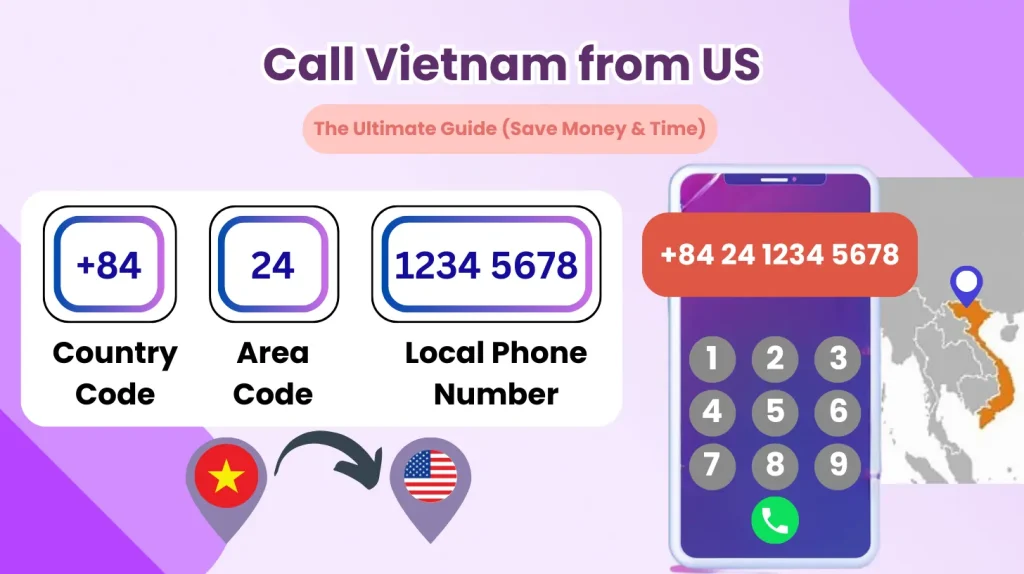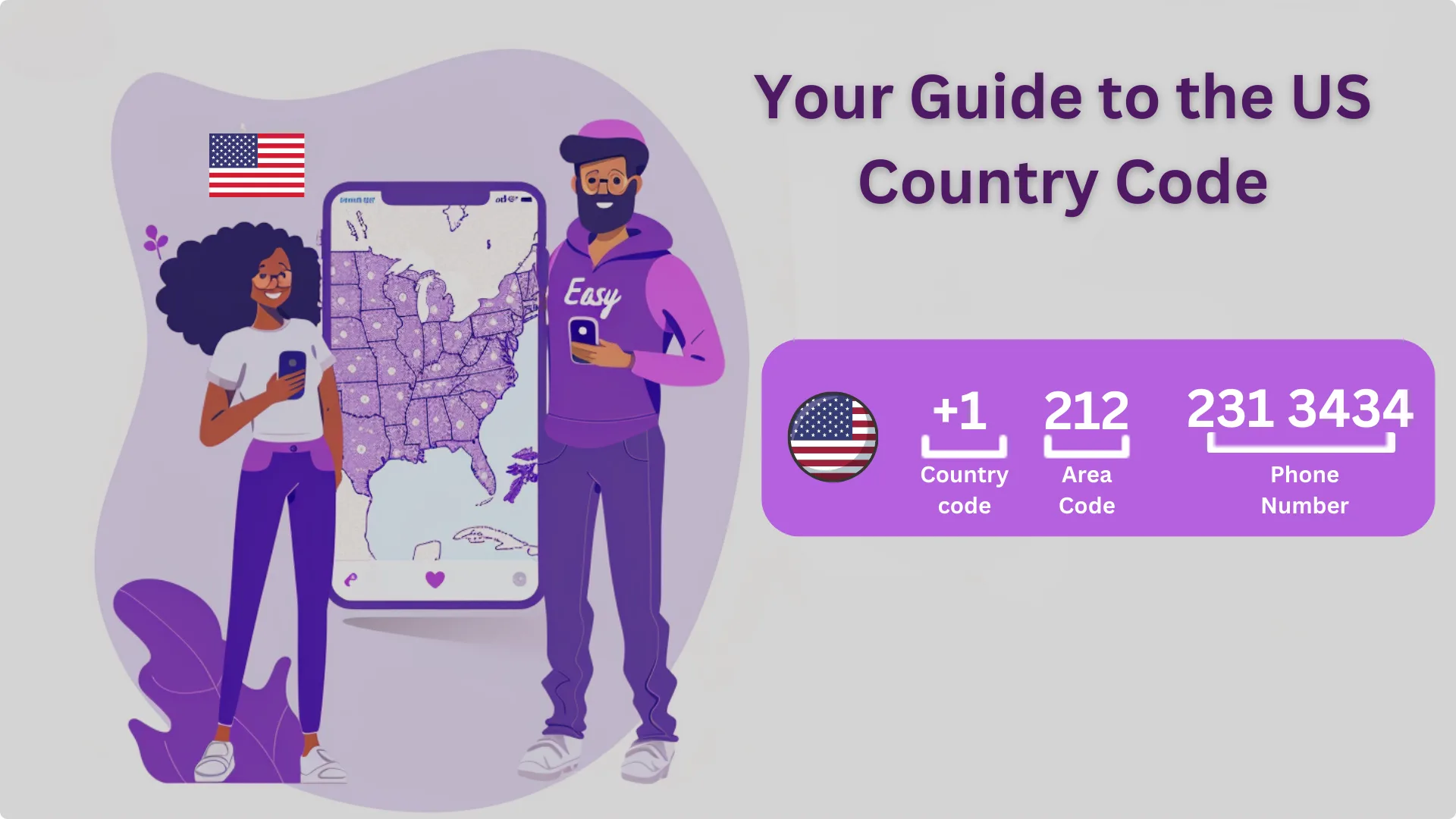Making international calls can be tricky, especially when dialing a country like Vietnam from the US. Understanding the correct dialing codes, area codes, and tips for cost-saving options is essential.
In this article, we will explore how to call Vietnam from US, including the necessary codes, dialing instructions, and alternative communication methods. We will discuss VoIP services as a way to save costs and improve call quality. Stay tuned to learn all you need to know about making international calls to Vietnam.
Key Takeaways:
- Calling Vietnam from the US requires knowledge of exit and country codes, as well as correct area codes for landline calls.
- VoIP services can help save costs on international calls to Vietnam and offer clearer connections.
- When making international calls to Vietnam, consider time zone differences, proper dialing sequence, and alternative communication methods to ensure a successful call.
How to Call Vietnam from US?
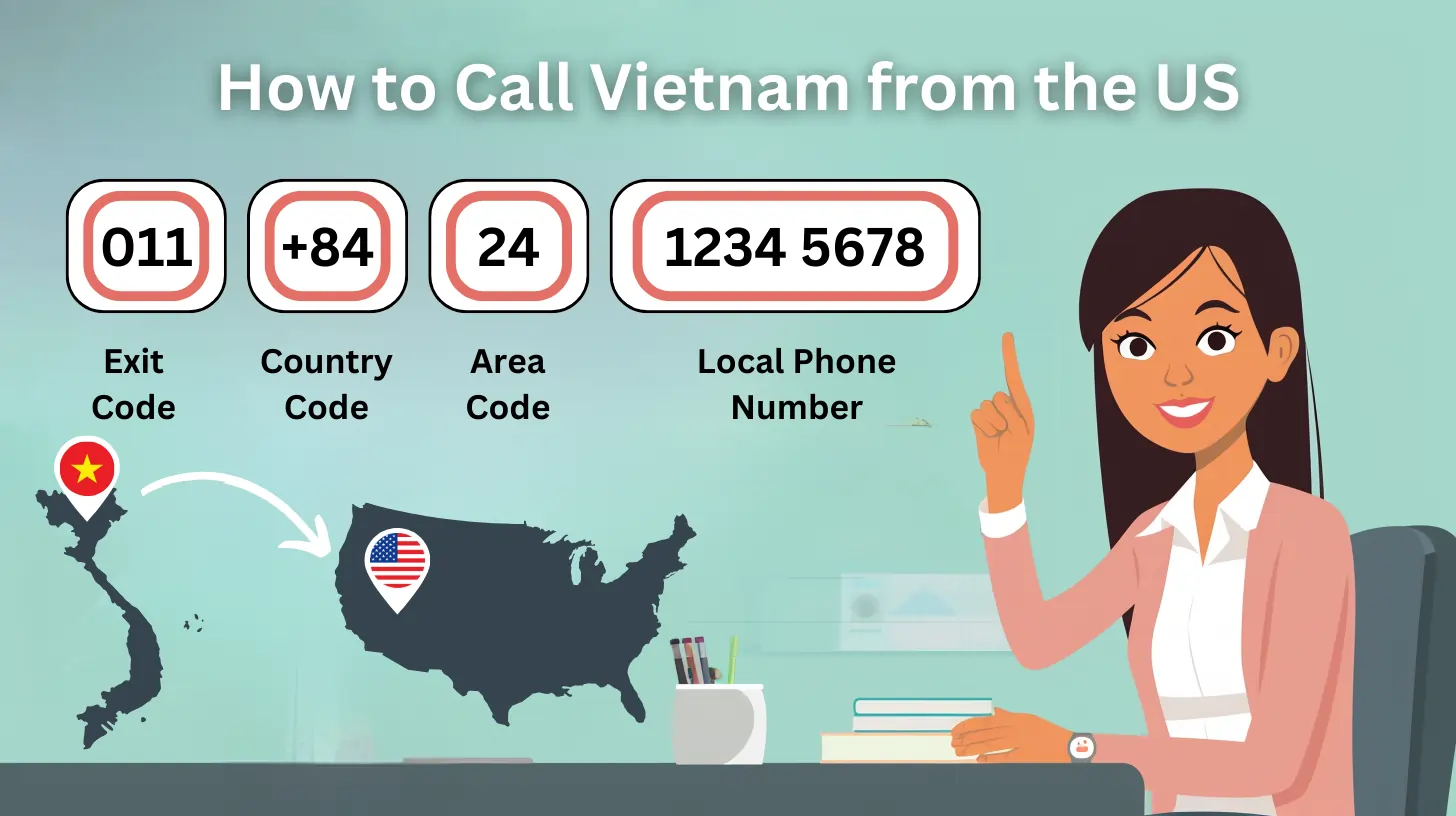
To successfully call Vietnam from the US using your US cell phone, you need to understand the dialing procedure, including the US exit code, Vietnam’s country code, and the correct area code for your destination.
What is the US Exit Code?
The US exit code, which is 011, is the first step in the international dialing format when calling from the United States.
It plays a crucial role in indicating to the phone system that the call is meant for an international destination outside the US. When dialing internationally from the US, the 011 code signals the start of an exit from the US communication network into the global telephone network. Without this code, the call would not reach its intended recipient in a foreign country.
For instance, if you were dialing a friend in the United Kingdom, you would begin by entering 011, followed by the country code for the UK, and then finally the local phone number. This universally recognized exit code ensures that your call is directed accurately across international boundaries.
What is Vietnam’s Country Code?
Vietnam’s country code, also known as the ISD code, is 84, and it follows the US exit code when dialing from the United States.
This country code plays a crucial role in international communication, ensuring that calls are properly routed to Vietnam. When making an international call from the US to Vietnam, you typically dial the US exit code (011), followed by Vietnam’s country code (84), and then the specific area code and subscriber number. For instance, if you are calling a landline in Hanoi, you would dial 011-84-24-XXXXXXX. Similarly, for a mobile phone number in Ho Chi Minh City, the dialing sequence would be 011-84-28-XXXXXXXX.
What is the Correct Area Code for Landline Calls?
To call a landline in Vietnam, you need the correct area code for the specific city, such as Hanoi or Ho Chi Minh City.
Identifying the appropriate area code for a specific city in Vietnam can be essential to ensure your call reaches the intended recipient seamlessly. Some popular area codes for different cities include:
| City | Area Code |
|---|---|
| Hanoi | 24 |
| Ho Chi Minh City | 28 |
| Da Nang | 236 |
| Hai Phong | 225 |
| Can Tho | 292 |
| Hue | 234 |
| Nha Trang | 258 |
When making a landline call within Vietnam, always remember to dial the correct area code before the local number to connect successfully. For example, if calling a landline in Hanoi, you would dial 24 followed by the local number. Being aware of these key area codes can simplify connecting with your contacts in various cities across Vietnam.
Making a Call to Vietnam

Making an international call to Vietnam from the US involves following a specific dialing sequence. Here’s a breakdown of the steps to ensure your call reaches its destination smoothly:
Using a cell phone with a calling card can be a cost-effective option for making international calls to Vietnam. This method can help you save on potential costs while ensuring a smooth connection.
Understanding the Dialing Components
- US Exit Code (011): This three-digit code signifies you’re initiating an international call from the US. Think of it as the “gateway” to connect with phone networks outside the US.
- Vietnam’s Country Code (84): This unique two-digit code identifies Vietnam within the international dialing system. Including this code directs your call to Vietnam’s phone network.
- Local Phone Number: This is the specific phone number you’re trying to reach in Vietnam. It can be either a landline or a mobile number.
Dialing Sequence
- Start with the US Exit Code (011): Enter this three-digit code at the beginning of your dialing sequence.
- Follow with Vietnam’s Country Code (84): Add this two-digit code after the US exit code.
- Dial the Local Phone Number: Here’s where the distinction between landlines and mobiles comes in:
- For Landlines: Directly enter the local phone number (typically 7-8 digits) after the country code. Do not include the mobile prefix.
- Example: Calling a landline in Hanoi (area code: 24) with the number 1234567, the complete dialing sequence would be: 011-84-24-1234567.
- For Mobile Phones: Include the mobile prefix (usually starts with 3, 5, 7, or 9) followed by the mobile number (typically 8 digits).
- Example: Calling a mobile number starting with 359 and the number 1234567, the dialing sequence would be: 011-84-359-then the mobile number 1234567.
Double-Checking for Accuracy
Before hitting the call button, always double-check the entire dialing sequence for any mistakes. Even a single wrong digit can prevent your call from reaching its destination.
Consider saving frequently dialed numbers in your phone’s contact list to avoid manual entry and ensure accuracy.
How to Save Costs on International Calls to Vietnam
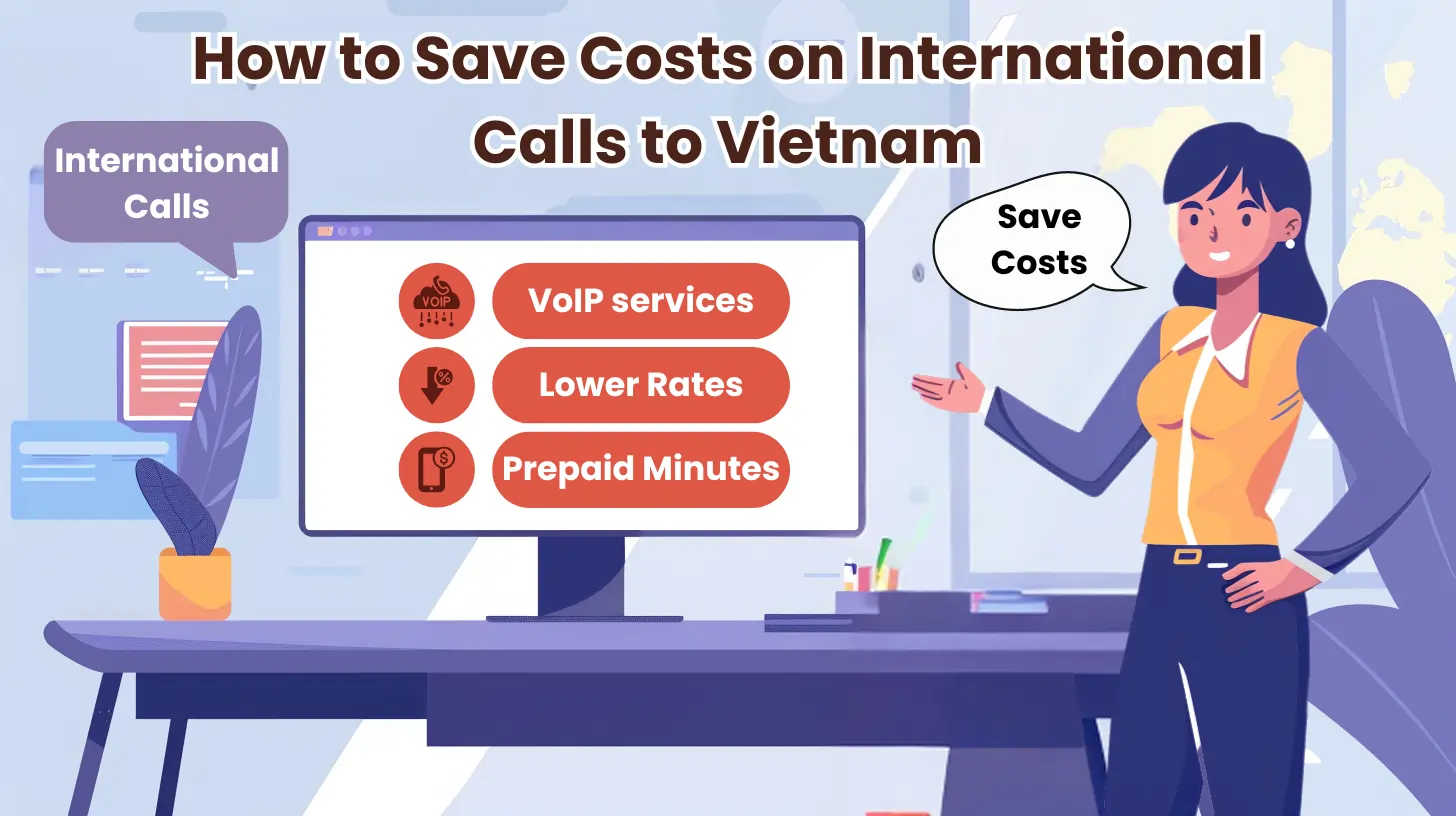
Saving costs on international calls to Vietnam can be achieved through various methods, with VoIP services being one of the most cost-effective options.
What are VoIP Services?
Imagine making phone calls through the internet instead of relying on phone lines. That’s the magic of VoIP! These services transform your voice into digital data packets that travel through the internet, reaching your recipient anywhere in the world. This allows you to make calls using:
- Computers: Download the VoIP provider’s app and use your computer’s microphone and speakers.
- Smartphones: Install the app on your phone and utilize its built-in microphone and speaker. You can also use VoIP services to call an international mobile phone number in Vietnam by entering the country code followed by the mobile phone number.
- Special VoIP Phones: Certain providers offer dedicated VoIP phones for a traditional phone-like experience.
There are different types of VoIP services:
- Peer-to-Peer: Users connect directly without a central server, ideal for personal use.
- Hosted PBX Systems: Businesses can create virtual phone systems with features like voicemail and call forwarding.
- Virtual Phone Numbers: Get a local phone number in Vietnam for a professional presence, even if you’re not physically there.
- Video Conferencing Solutions: Combine voice calls with video chat for a more interactive experience.
Popular VoIP providers include Skype, Google Voice, and Vonage. They offer various features like:
- Call recording: Capture important conversations for future reference.
- Voicemail transcription: Read voicemail transcripts instead of listening to recordings.
- International calling options: Discounted rates specifically designed for international calls.
How Do VoIP Services Save You Money?
VoIP services are significantly cheaper than traditional phone lines for international calls, especially to Vietnam. Here’s why:
- Lower Rates: VoIP providers often have much lower per-minute rates compared to traditional phone companies. Imagine paying $0.03 per minute for a call to Vietnam instead of $0.15! The savings add up quickly.
- Prepaid Minutes: Many VoIP services offer prepaid minute packages. You pay a set amount upfront for a specific number of minutes, allowing you to control your expenses.
Clearer Connections with VoIP
Not only can VoIP save you money, but it can also provide clearer connections than traditional phone lines for international calls. Here’s how:
- High-Speed Internet: VoIP relies on a strong internet connection. This ensures your voice data packets travel quickly and efficiently, minimizing distortion and disruptions during calls.
- Reduced Latency: Latency refers to the time it takes for data to travel. A high-speed internet connection minimizes latency, resulting in smooth and uninterrupted communication.
- Quality of Service (QoS): VoIP prioritizes voice data over other types of internet traffic like video streaming. This ensures your call quality remains crisp and stable.
Tips for Making International Calls to Vietnam

When making international calls to Vietnam, it’s essential to consider the time zone differences, ensure the proper dialing sequence, and explore alternative communication methods.
Check Time Zone Differences
Before making a call to Vietnam, check the time zone differences using a world clock or time zone converter to choose a suitable time for both parties.
Being mindful of time zones is crucial to avoid waking someone up in the middle of the night or missing a crucial business call. Utilizing online tools such as the Time Zone Converter by Timeanddate or the World Clock on your smartphone can help you quickly determine the best time to make your call. It is advisable to schedule calls during standard working hours to ensure both parties are available and alert. Remember, a well-timed call can make a significant difference in the success of your communication.
Ensure Proper Dialing Sequence
Ensure that you follow the proper dialing sequence, which includes the US exit code, Vietnam’s country code, and the local number, to avoid connection issues. When dialing internationally from a US cell phone to Vietnam, you should start with the US exit code, which is 011. Then, enter Vietnam’s country code, which is 84, followed by the local number of the person you are trying to reach.
Common mistakes to avoid include forgetting to dial the US exit code or mistaking the country code for another similar-sounding one. It’s essential to double-check the numbers before making the call to ensure a successful connection.
For landlines, the complete dialing format would be 011 + 84 + (local number), while for mobile phones, it would be 011 + 84 + (mobile number).
Consider Alternative Communication Methods
Consider using alternative communication methods like communication apps or virtual phone numbers to make calls to Vietnam more convenient and cost-effective.
Communication apps are excellent tools for staying connected with friends, family, or colleagues in Vietnam without incurring high international call charges. Popular apps like WhatsApp, Skype, or Viber offer free or low-cost calling options, making it easy to communicate even over long distances.
On the other hand, virtual phone numbers can provide a local presence in Vietnam, allowing you to receive calls as if you were physically present in the country. This can be advantageous for businesses looking to expand their reach or individuals wanting to establish a local presence without being physically there.
Things to Keep in Mind When Calling Vietnam from the US
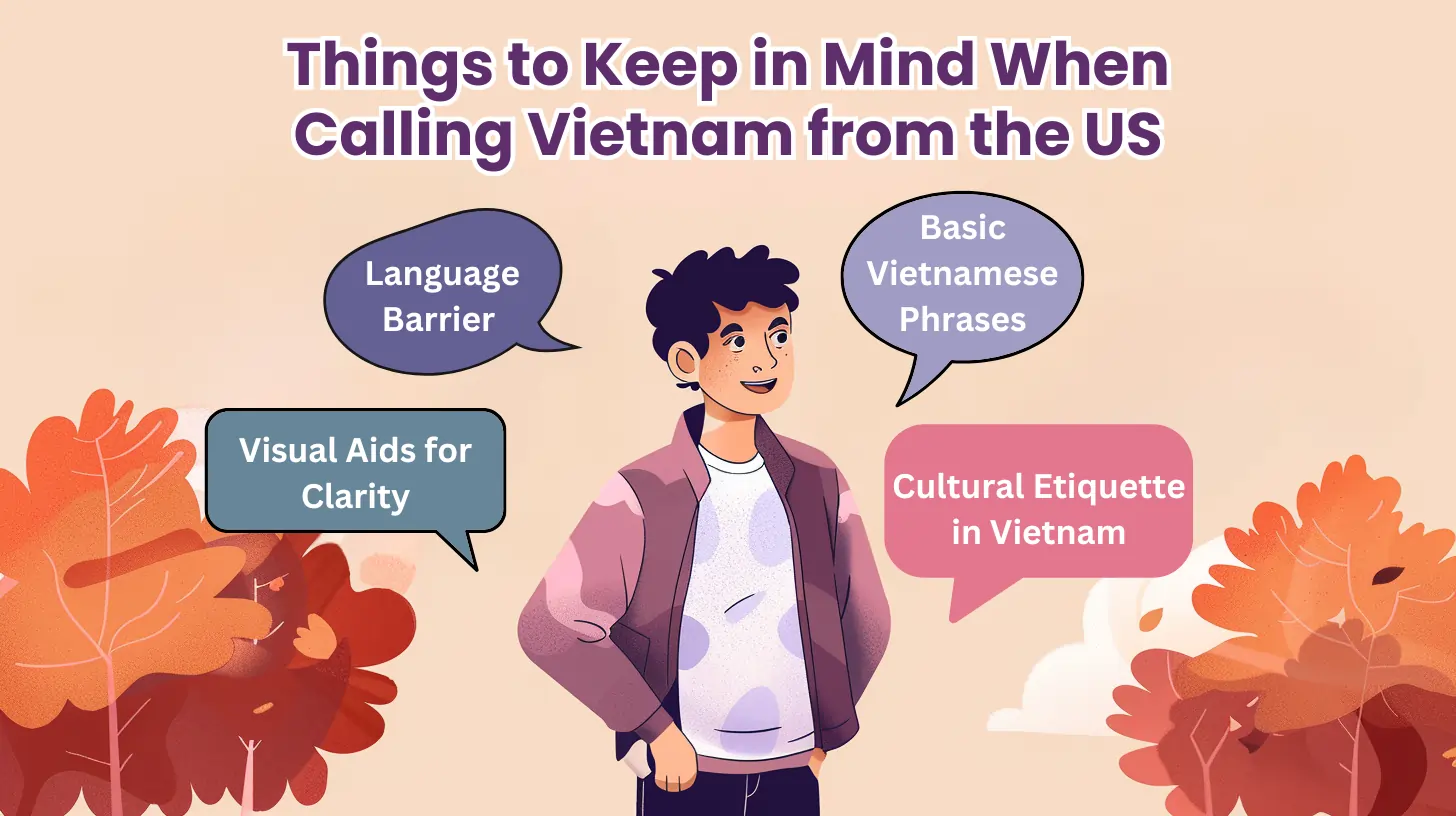
When calling Vietnam from the US, be mindful of potential language barriers, prepare for possible connection issues, and ensure you have an appropriate international calling plan or credits.
Be Aware of Potential Language Barriers
Language Barrier Awareness: Vietnamese might not be your forte, and that’s perfectly fine! Recognizing this potential hurdle allows you to prepare strategies for clear communication.
Basic Vietnamese Phrases: Learning greetings and common expressions demonstrates respect and can significantly improve communication. Online translation tools or phrasebooks can be your allies here.
Cultural Etiquette in Vietnam: Understanding Vietnamese cultural etiquette is essential. Using formal language and addressing people by their titles (Mr., Ms., Dr.) is valued.
Visual Aids for Clarity: A picture can be worth a thousand words! Consider using photos, drawings, or even gestures to supplement your conversation, especially if vocabulary limitations arise.
Prepare for Possible Connection Issues
Reliable Network is Key: Dropped calls are the worst! Make sure you have a strong and stable internet connection, whether Wi-Fi or cellular data, to minimize technical glitches or call drops.
Troubleshooting Knowledge: Be prepared! Knowing basic troubleshooting steps like restarting your modem/router, checking cable connections, or resetting your device’s network settings can be lifesavers if you encounter technical issues.
Have Proper International Calling Plan or Credits
Smart International Calling Plan: Unexpected roaming charges can put a damper on things. Having a suitable international calling plan or enough prepaid minutes ensures uninterrupted calls to Vietnam.
Plan Selection: Analyze your calling needs. Do you require a fixed monthly plan or a more flexible pay-as-you-go option? Compare rates and choose a plan that aligns with your typical calling habits.
Usage Tracking & Monitoring: Regularly monitor your minutes to avoid exceeding plan limits and incurring extra charges. Many service providers offer mobile apps or online accounts that allow you to easily track your minutes and effectively manage your usage.
By following these tips, you can overcome potential language barriers, ensure a stable connection, and manage your calling costs effectively. Now, you’re ready to connect with Vietnam with confidence and enjoy a smooth calling experience!
Conclusion
Successfully calling Vietnam from the US involves understanding the international dialing process, considering cost-saving measures, and being aware of potential challenges and solutions.
When dialing Vietnam from the US, it is essential to use the correct country code (+84) followed by the area code and phone number. Utilizing internet-based calling services or Voice over Internet Protocol (VoIP) applications can significantly reduce calling costs. It’s crucial to compare rates from different service providers to find the most cost-effective option.
Effective communication strategies, such as identifying the best time to call considering the time zone difference, can help ensure smooth conversations. Familiarizing yourself with common challenges like connection issues or language barriers give the power to callers to address them proactively.
FAQ's
How do I call Vietnam from the US?
To call Vietnam from the US, you need to first dial 011 (the US exit code), followed by 84 (Vietnam’s country code), and then the local number. Make sure to include the correct area code if calling a landline.
Can I use VoIP services to call Vietnam from the US?
Yes, using VoIP (Voice over Internet Protocol) services can save costs and offer clearer connections for international calls to Vietnam from the US.
What is the country code for Vietnam?
The country code for Vietnam is 84. Remember to include this code when calling Vietnam from the US.
Do I need to include the area code when calling a landline in Vietnam from the US?
Yes, it is important to include the correct area code when calling a landline in Vietnam from the US. This will ensure that your call connects to the correct location.
Are there any additional fees for calling Vietnam from the US?
The cost of calling Vietnam from the US may vary depending on your phone plan and service provider. It is best to check with your provider for any additional fees or charges for international calls.
Is it possible to make free calls from the US to Vietnam?
While there are some free calling options available, most international calls to Vietnam from the US will incur some costs. Using VoIP services or apps that offer free international calls may be a more affordable option.
What are some greetings or common expressions I can learn in Vietnamese to improve my communication?
While having a full conversation in Vietnamese might be challenging, learning a few basic greetings and phrases can go a long way. Here are some helpful examples:
- Hello: Xin chào (sin chao)
- Goodbye: Chào tạm biệt (chao tam biet)
- Thank you: Cảm ơn (cam on)
- You’re welcome: Không có gì (khong co gi)
- Please: Xin vui lòng (xin vui long)
- Do you speak English? Bạn có nói tiếng Anh không? (Ban co noi tieng Anh khong?)
Are there any etiquette tips specific to Vietnam that I should be aware of when making a call?
Absolutely! Here are a couple of things to keep in mind:
- Using titles: In Vietnamese culture, it’s respectful to address people by their titles, such as Mr., Ms., or Dr., followed by their last name.
- Starting with small talk: Taking a moment for pleasantries before diving into the main topic of your call is appreciated. This shows respect and acknowledges the relationship.
- Speaking softly: Vietnamese culture generally values a softer speaking tone. Avoid raising your voice or speaking too forcefully.
Besides VoIP services, are there other ways to save on international calls to Vietnam?
Yes, there are a few options to consider:
- Calling apps: Many communication apps like WhatsApp, Viber, or Facebook Messenger offer free or low-cost calling features, especially over Wi-Fi.
- Calling during off-peak hours: International call rates are often cheaper during evenings, weekends, or holidays. Consider these times if your schedule allows.
- Look for promotions: Phone service providers sometimes offer special promotions or discounts on international calls. Keep an eye on your provider’s website or app for deals.
What if I don't have a smartphone or reliable internet access? Can I still make calls to Vietnam?
If you don’t have a smartphone or internet access, you can still make international calls using a landline phone. However, these calls might be more expensive depending on your phone plan. Here are some alternatives:
- Calling cards: Prepaid calling cards offer a way to make international calls from a landline phone at a fixed rate.
- Calling collect: This option allows the recipient of the call to pay for the charges. However, collect calls are typically more expensive than other methods.

